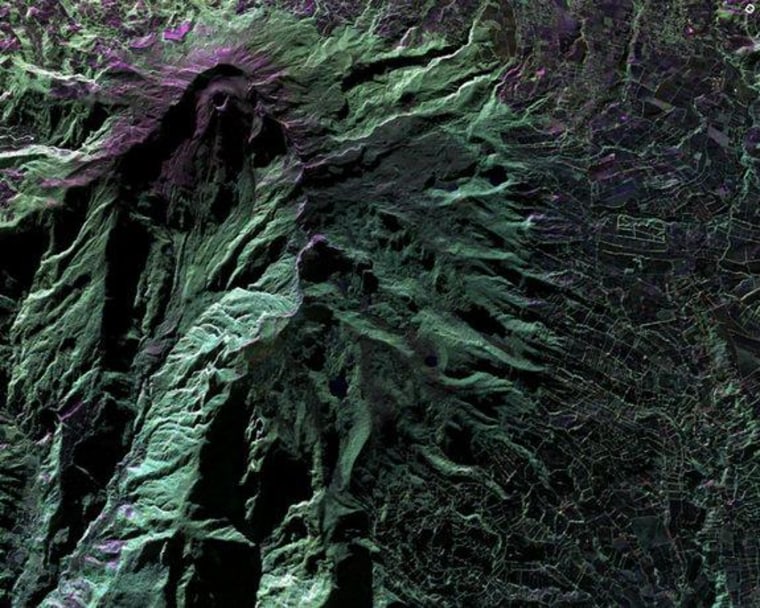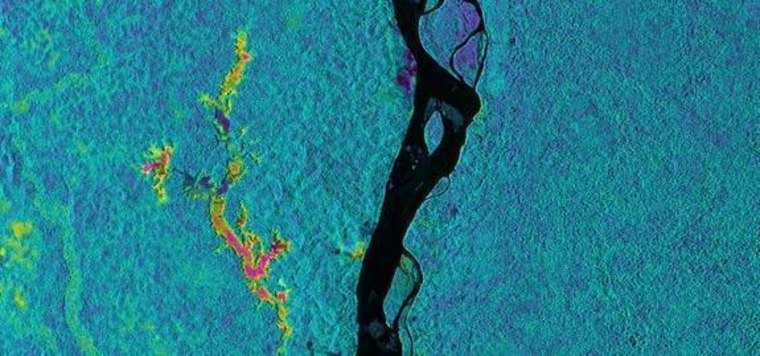
By Becky Oskin
NASA's globe-trotting, remote-sensing plane wrapped up a month-long trip to Central and South America in March, returning with images of volcanoes, Amazon floods and archaeological sites.
The small Gulfstream-III passenger plane carries a 10-foot-long (3 meters) radar pod, the unmanned aerial vehicle synthetic aperture radar (UAVSAR). The radar scans Earth's surface with radio waves to detect and measure changes of less than half an inch (1 centimeter). In past years, flight passes included volcanoes, glaciers, earthquakes and landslides.
This March, researchers had a long list of targets to hit in Central and South America. But first, they flew over groundwater basins in Arizona's Cochise County for the Arizona Department of Water Resources, to monitor seasonal changes in the surface elevation that reveal clues to the groundwater stored beneath.
In Central America, the radar team looked at coastal mangrove forests and active volcanoes. In South America, the sites ranged from Chilean wineries and shrinking tropical glaciers to Amazon cloud forests and Moche culture archaeological sites in Peru.

"The radar is sensitive to water content of soil, and soil moisture constrains a lot of ecosystem processes," Yang Zheng, UAVSAR operational processing lead, told OurAmazingPlanet during a UAVSAR demo at NASA's Dryden Flight Research Center in January. In the world's forests, "We're trying to make the step from knowing where there's forest to how much carbon is stored in the forest and understanding carbon processes," said Zheng, who is based at NASA's Jet Propulsion Laboratory in Pasadena, Calif.
The UAVSAR data is higher resolution, with less interfering noise than most such data from satellites, according to NASA. Its GPS system flies the plane in a line with real-time corrections via satellite phone, providing global coverage.
"We can fly within a 10-meter tube," said Naiara Pinto, UAVSAR science coordinator, at the Dryden flight demo.
Email Becky Oskin or follow her @beckyoskin. Follow us @OAPlanet, Facebook or Google+. Original article on LiveScience's OurAmazingPlanet.
- Bigger is Better: 10 Huge Images of the Planet
- Top 10 Game-Changing Earth Photos from Landsat Satellites
- Earth Quiz: Mysteries of the Blue Marble
Copyright 2013 LiveScience, a TechMediaNetwork company. All rights reserved. This material may not be published, broadcast, rewritten or redistributed.